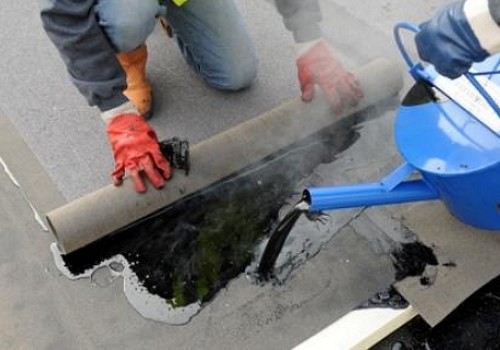Modern methods of building construction presuppose the widespread use of new materials that meet the increased requirements for operation. Mastic bitumen is fully able to satisfy the impeccable waterproofing of the basement or roof of a private house. Familiarize yourself with this wonderful material, which will facilitate the installation work carried out independently.
Content
Popular stuff
The most popular waterproofing composition for a wide range of applications is bitumen mastic. Sealing of external seams and internal joints of building structures, laying and gluing of roll insulating materials is now confidently carried out with its direct application.
The main purpose of the mastic is to conduct waterproofing and anticorrosive protection of the surface of metal, concrete and wooden building structures. In addition, waterproofing mastic is a reliable protection of pipelines and roofing.
Naturally, the universal waterproofing properties are acquired due to the chemical composition of the mastic.
What is made of bituminous mastic
Mastic is a product of oil refining, in accordance with the requirements for oil products and standards. Waterproofing material is a mixture of molten bitumen, plasticizer and filler.
Filler uses fine-grained asbestos of grade 7 to 10 percent, as well as rubber crumb to 5 percent of the composition. The composition of the mastic also includes pulverized powders of limestone and quartz. The role of the plasticizer is played by used engine oil, which gives the product viscosity and mobility.
Depending on the type of binder, the following types of mastic are distinguished:
• bitumen
• rubber-bituminous
• bitumen-polymer.
as well as promising astringents: bitumen plus latex, bitumen plus polyolefin (synthetic rubber).
The most popular ones are mastic bitumen-rubber hot application (MBR), bitumen-insulating (MBI) and bitumen-rubber (BKM).
How to classify mastic
According to the requirements declared by the manufacturer of the waterproofing material, the bituminous mastic can be classified according to the following parameters:
• purpose (waterproofing, roofing, anticorrosive and glued)
• Method of application: cold and hot
• type of curing - curable and non-curable
• type of binder
• type of solvent (water or organic)
• composition (one- and two-component).
The general that unites any mastic, these are such qualities:
• ease of use
• Coupling ability, independent of the geometry of the working surface
• the ability to form an elastic coating without cracks
• Resistance to shrinkage and flow.
The combination of these qualities, ideally, should provide a durable high-quality coating or waterproofing.
An important factor in carrying out waterproofing by oneself is the consumption of mastic.
Bitumen mastic: material consumption
The main technical characteristic of bitumen mastic for waterproofing is the "dry residue" index, which affects the consumption of the material. For example, a dry residue of a cold mastic of 60 percent will mean that 0.6 kg of mastic and 0.4 solvent or water per kg of material.
Thus, when the material is applied to the surface, it remains, as it should be, 0.6 kg of waterproofing mastic.
Let us show that for waterproofing the foundation required:
• consumption of cold mastic bitumen 2.0 - 4.0 kg / m2
• Hot mastic consumption - 4.0 kg / m2.
with the total number of applied layers 2.
for roof waterproofing:
• cold bituminous mastic will require from 3.5 to 6.0 kg / m2
• Hot mastic - 6.0 kg / m2
with a total number of layers of material - 3 and two reinforcing layers of glass fiber
for horizontal gluing of roll materials:
• Cold mastic consumption from 1.0 to 2.0 kg / m2
• Consumption of hot mastic - 2,0 kg / m2.
But on this the advantages of bitumen mastic for waterproofing the foundation are not limited, because the method of the device and the technology of oil-impregnated waterproofing are available for carrying out with one's own hands.
General application of bitumen mastic
The use of mastic is not limited to using it as a waterproofing foundation. Mastic is recommended for use in such cases:
• installation and repair of flat or soft roofing for complex areas of the surface
• Sealing joints in the process of eliminating and eliminating leakages
• waterproofing the foundations of basins, garages, basement floors and transitions.
Delivery of waterproofing mastics is carried out by the manufacturer in the form of hermetically tight containers of economical packaging. This ensures premature hardening, but the shelf life and use of waterproofing mastics is limited to 2-3 months.
Being an innovative waterproofing material, the mastic can be used for any working surfaces. Mastic is applied at any angle of inclination or curvature of the surface, using a spatula or brush.
The regulated temperature range is from minus 40 ° C to plus 80 ° C, excluding the presence of atmospheric precipitation. In practice, the mastic is used in conjunction with reinforcing materials in the form of geomembranes, fiberglass or glass mesh.
Before applying the mastic, the working surface is cleaned of debris, dust and moisture and a primer is produced. After the primer layer has dried, the first layer of waterproofing with thickness up to 3 mm is applied. Then, the first layer is reinforced with a reinforcement material, which is drowned in a freshly applied layer of mastic.
After the final drying of the mastic layer with the reinforcement, a second layer, up to 6 mm thick, is applied, which depends on the state of the surface and the type of mastic.
How to properly use waterproofing bitumen mastic, shown here.


































